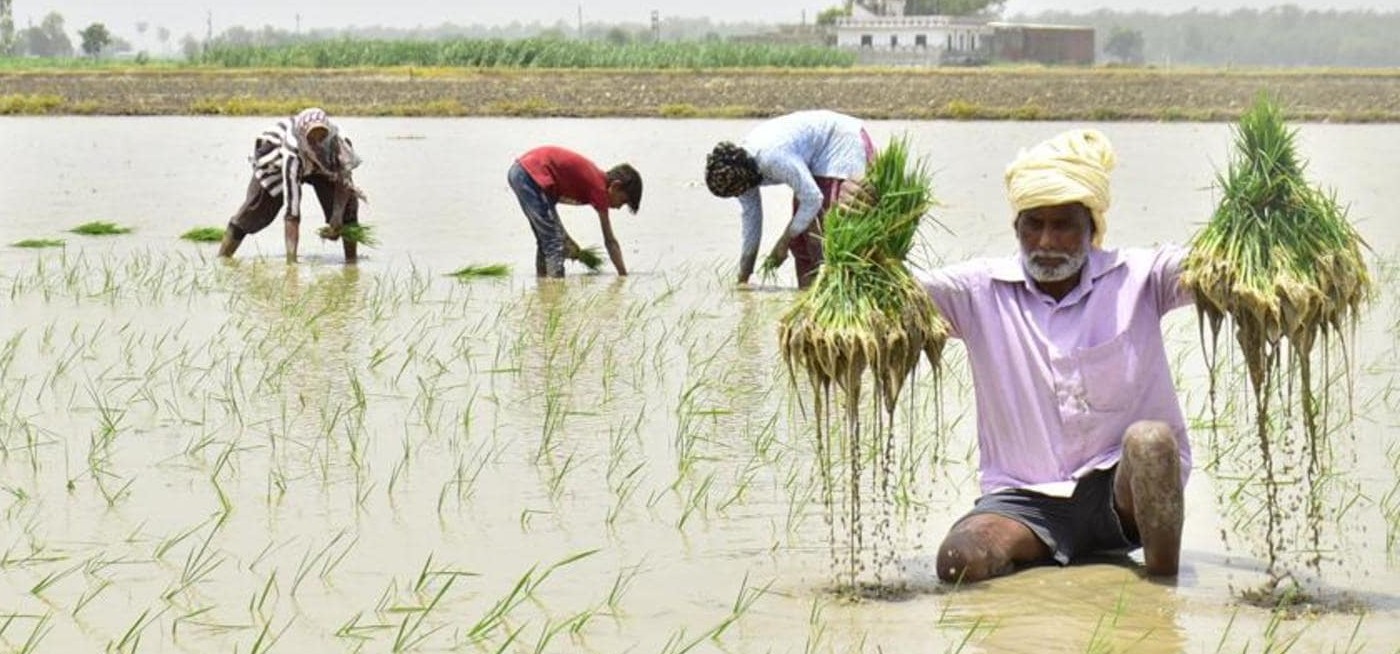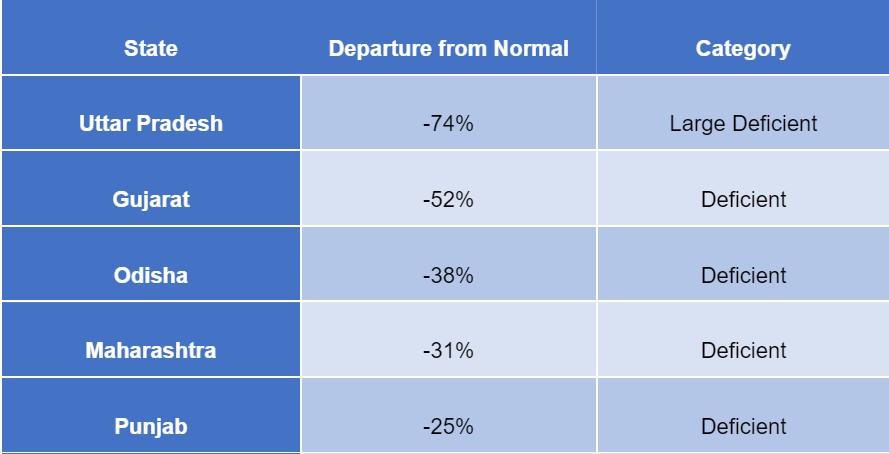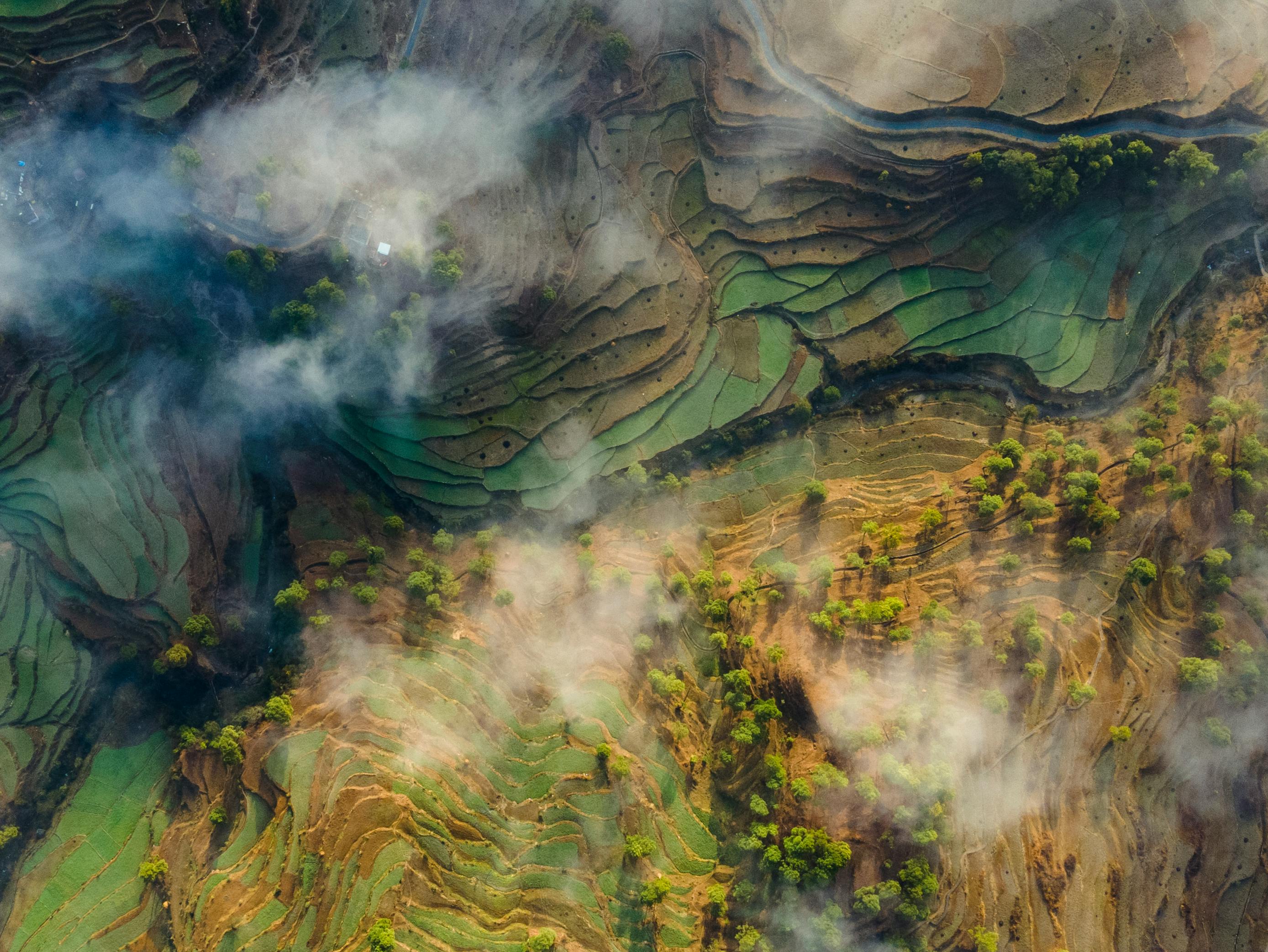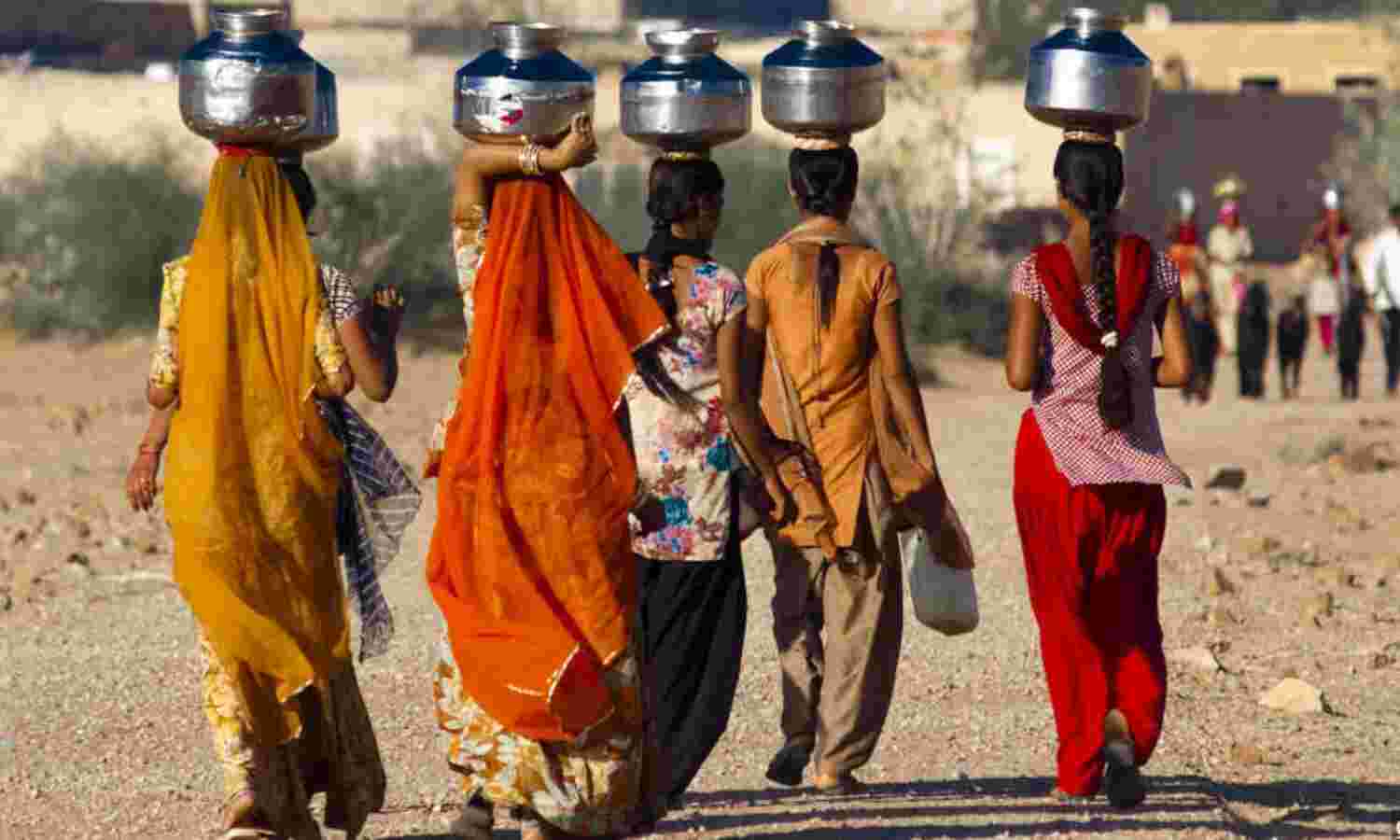Climate change led erratic Monsoon and global disruptions threaten food production, experts call for self-dependency
While the country is yet to overcome the threat over food crisis, the threat over rice production is looming large with the weak start and delayed progress of the Monsoon. According to data released by the Agriculture Ministry, sowing of rice is already down by 46% as of June 24. As on July 1, area sown under rice was 43.45 lakh hectares, while in 2021 it was 59.56 lakh hectares.
By Kartiki Negi / Jul 2, 2022

HT
Food security has been a concern for the world, ever since the war between Ukraine and Russia broke out. Just as India, world’s second largest wheat producer, promised to feed the world, climate change played spoilsport. Owing to an unabated heatwave between March-May this year, the Indian government was forced to announce a ban on wheat export to safeguard its internal food market and counter inflation.
However, Industry experts raised concern, citing that the move might help in taking off inflationary pressure to some extent, but will hurt the growth eventually. With this, India lost the opportunity to capitalise on the narrow market created globally due to the ongoing conflict.
While the country is yet to overcome the threat over food crisis, the threat over rice production is looming large with the weak start and delayed progress of the Monsoon. According to data released by the Agriculture Ministry, sowing of rice is already down by 46% as of June 24. As on July 1, area sown under rice was 43.45 lakh hectares, while in 2021 it was 59.56 lakh hectares. Rice is a water intensive crop and less or erratic rainfall has a direct impact on sowing in terms of soil moisture and irrigation.
Although India is better placed due to the availability of comfortable food stocks, experts have called for an urgent need for being self-sufficient for food.
“War has given the world a loud and clear message – becoming food self-sufficient is the priority for every country. Monsoon deficiency is further going to increase pressure leading to escalating food prices, which are already high. We need to build capacity to produce rather than worrying about food supply chains, which cannot be depended on as the war has shown. Imagine if we didn't have the surplus that addressed hunger during the pandemic, we would have been in a similar situation like countries who are dependent on food supply chains. Thus, we need to be careful about the linkage of monsoon and climate change and secondly plan for trade policy to look after our food security,” said Devinder Sharma, agriculture trade policy analyst.
Monsoon rains have covered the entire country six days in advance. However, it forayed into the central and parts northwestern plains, which are considered important for sowing of Kharif crops, well behind schedule. The variability of Monsoon rains due to climate change has also added to the sowing stress. A disrupted sowing season has an impact on the farmers’ welfare, who bear the maximum brunt. According to meteorologists, despite the presence of Monsoon current, rains did not make an appearance over several areas.
“Kharif sowing has been affected because of the prolonged dry spell that still continues, while the northeast region is bearing the brunt of extreme heavy rainfall. While sowing is in process. However, there is cause for worry for states like Maharashtra which are highly deficit. Definition of normal Monsoon is something we need to debate upon, especially the distribution of rainfall. This variability in rainfall dispersal has an impact on food production. Sowing intensity gets affected, while increased humidity levels lead to several diseases. Country is only concerned about production level but we should also see farmer welfare in terms of income and their food security. There is a need for an adequate policy approach so that we do not end up victimising the farmers,” Devinder Sharma added.
“Easterly winds, which are responsible for bringing Monsoon rains, have been completely absent so far in June. We witnessed south-westerly winds, which have taken rains from Odisha, West Bengal and Bihar to Northeast India. Easterly winds have started picking up pace now, but delay in Monsoon is cause for worry for the northern region. The intensity and duration of extreme weather events are increasing on account of climate change. What happened in Northeast India is an example of the same. Monsoon rainfall variability is very high as we can see that north-western plains, along with central and southern states are deficit by large margins, while northeastern regions are large surplus,” said Dr R K Jenamani, Senior Scientist, National Weather Forecast Division, India Meteorological Department (IMD).
Rainfall deficiency across the states as on July 2, 2022 (Data Source: IMD).

The Kharif and Rabi season are two main cropping seasons of the country. Sowing for the Kharif crops begin with the onset of Monsoon season in. June. Thus, Monsoon rains play a crucial role in agriculture, contributing around 18% to the country’s Gross Domestic Product (GDP), which employs nearly 50% of India's workforce.
Over 40% of the country’s farmland is dependent on Monsoon rains for irrigation, which accounts for a substantial share. With Monsoon patterns becoming erratic due to the warming atmosphere, this can pose a great threat to the sector. Dry spells have been increasing and simultaneously extreme weather events have also risen across 85% of weather stations in the last decade. At present, India lacks high adaptive capacity to extreme hydro-met disasters, with only the east zone having moderate adaptive capacity. Trade and policy experts have been mulling over the need for adaptation policies to tackle this.
“Agriculture will be impacted as we fail to ready our adaptive capacity but the other soft sectors will also be impacted. A 1% change in monsoon rainfall will result in 0.34% change in India's agriculture GDP that year. A normal monsoon can increase GDP from the transport, storage, trade and communication sector by 1% and 3% in the agriculture dominated states. This will only happen when we provide granular climate information that can inform a farmer on the impact it will have on crops and the steps that need to be taken in the short, mid and long term. To mitigate the problem at a policy level, our disaster or climate action plans must include nature based solutions so that we can tackle hazards which can restrict our ecosystem from being damaged,” said Abinash Mohanty, Programme Lead, Risks & Adaptation, Council for Energy Environment & Water.


